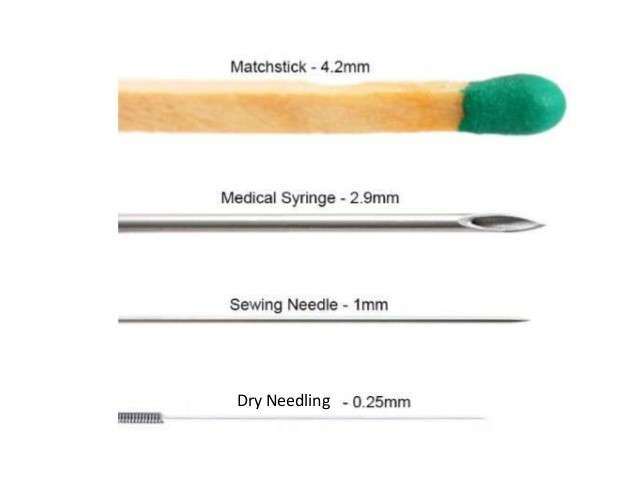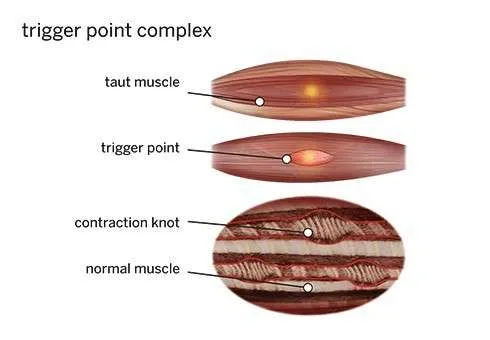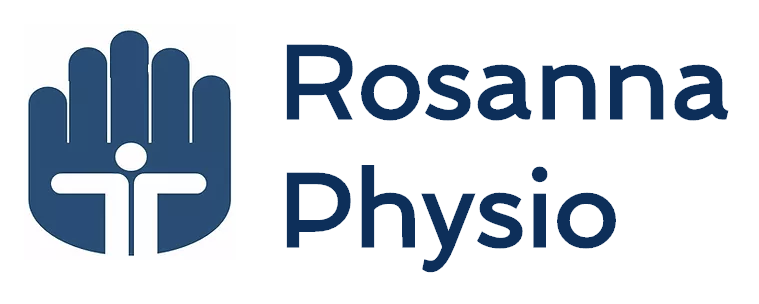Dry Needling Physio: An Effective & Safe Treatment for Lasting Pain Relief
Who here hasn’t had painful joints or tight muscles at some point? Almost everyone with a desk job has experienced a stiff neck or sore lower back from sitting too long. Your physio has a treatment that can safely and effectively combat muscle tightness and joint aches. It provides lasting relief. Have you heard of dry needling?
Dry needling is a relatively new physiotherapy technique. It may provide the relief you’ve been seeking. Unlike traditional acupuncture, it is grounded in evidence-based Western medical principles. Dry needling targets specific trigger points in muscles to stimulate healing.
But there’s more to this treatment. Let’s look at how dry needling could be a game changer in your journey to living pain-free.
Understanding Physio Dry Needling Techniques
To fully appreciate dry needling benefits, it’s key to understand the techniques physios use in this unique pain relief therapy.
Dry needling physio is a specialised pain management treatment. Thin needles are inserted directly into muscle trigger points. This helps release tension, reduce pain, and improve flexibility. It’s strategic, rooted in anatomy and physiology – not just poking with needles.
Finding a decent physio who does dry needling near, you take caution and homework – training and know-how matter.
A skilled therapist will size up your condition closely, know your medical backstory and everyday physical routines, spot good trigger spots, and then do the dry needling technique effectively.

This certain needle technique needs precision and expertise, so the perfect physio for you will have received extensive schooling, certification, and lots of dry needling experience.
So, what goes down during a physio dry needling session? It won’t hurt. You may feel a tiny prick when the needle goes in your skin, but then it’s often relief as your tight muscle lets go. The effect is commonly instant; you’ll likely experience less pain and more mobility right after treatment.
Dry Needling Vs. Acupuncture
While valuing the dry needling techniques, it’s also key to distinguish this healing approach from another famous needle method, acupuncture.
You may sense similarities between them, as both use thin needles placed into specific body points. Yet, their underlying beliefs, goals, and application ways are distinctly different. Let’s take a look at the two treatment options side by side:
Acupuncture, an ancient Chinese medicine practice, works on the idea that energy, or ‘Qi,’ flows through your body along meridians. Sickness or discomfort is seen as disrupting this flow, and acupuncture tries to restore it, promoting overall wellness.
Dry needling is a contemporary physiotherapy approach. It focuses on musculoskeletal pain. Dry needling targets “knots” in muscles that cause and refer pain. Your physio uses evidence-based knowledge of anatomy and neurophysiology. They relieve these knots, addressing your pain directly. They improve muscle function with insertion of needles at a specific trigger point.
To summarise, acupuncture prioritizes overall health and balance. But dry needling zeros in on your pain. Both have merits.
However, dry needling stands out for targeted, science-backed pain relief. It is a potent physiotherapy tool.
Safety Measures in Dry Needling Used By Physios
Given dry needling’s slightly invasive nature, physios follow strict safety measures. This ensures effective, hygienic, and comfortable treatment. They follow these steps for your safety:
- Single-use sterile needles always: No infection risk.
- Wearing gloves: Maintains good hygiene prevents contamination.
- Cleaning skin: Target area disinfected to minimize infection risk.
- Proper disposal of used needles: After every session ends, all needles get tossed carefully into a sharps bin. This ensures nobody gets hurt by them.
- Continuing education: Physiotherapists keep learning about new research and techniques. They do this to give you the very best care possible.
These steps are there to keep you feeling secure and relaxed during dry needling sessions. Physios follow safety rules closely, so dry needling stays a safe, helpful treatment option.
You should feel confident you’re getting care from skilled professionals in a clean, safe space. The treatment helps your health and gets done properly.
Potential Side Effects and Precautions
Even with strict safety during dry needling, like any medical procedure, there are potential side effects to consider – though any from dry needling are very mild.
Your muscles may feel a bit sore temporarily, or you could get minor bruising where the needles went in. Some people feel tired or dizzy right after treatment. But these side effects are usually mild and go away fast.
However, dry needling may not be recommended in certain cases. If you’re scared of needles, have a weakened immune system, or are pregnant, tell your physio. They’ll decide if the benefits outweigh the potential risks.

Conditions Physios Treat With Dry Needling
You might be wondering what conditions can benefit from dry needling; let’s investigate the range of musculoskeletal issues that physiotherapists commonly address using this needle trigger point technique.
Dry needling helps to alleviate pain, stimulate healing, and improve muscle function, making it a valuable tool for a variety of conditions (these are just a handful of conditions dry needling can provide pain relief for):
- Chronic back pain: Dry needling can release tight muscle bands linked to the lower back pain, offering relief from this persistent problem.
- Tennis elbow: This condition, often caused by overuse of the elbow joint, can be effectively treated with dry needling.
- Headaches and migraines: Dry needling can reduce the frequency and severity of tension headaches and migraines by relieving muscle tension and promoting blood circulation.
- Fibromyalgia: As a part of a holistic treatment approach, dry needling can help manage the widespread pain associated with fibromyalgia.
- Osteoarthritis: Dry needling can alleviate pain and stiffness in joints affected by osteoarthritis, enhancing mobility and quality of life.
Dry needling is an adaptable, efficient remedy for discomfort across diverse ailments. Remember to counsel with your physiotherapist to evaluate if it suits your particular condition.
Dry Needling Physio Session: A High Level Overview
Having examined the conditions benefiting from dry needling, let’s delve deeper into the session’s proceedings.
To commence, your physiotherapist will thoroughly assess your pain and physical state.
They’ll pinpoint specific muscle trigger points causing discomfort or impeding movement. These constitute the treatment’s targets.
Next, they’ll prepare the area for needling, ensuring cleanliness and safety. Sterile, disposable needles are then gently inserted into the trigger points. You may sense a slight prick, a muscle twitch, or deep aching—signifiers that the treatment is effective.

The needles remain in situ for 5 to 30 minutes, with your physiotherapist carefully monitoring your response. During this time, you’ll likely experience muscle relaxation and pain alleviation.
Post-Treatment Care and Considerations: Vital Steps
After a dry needling session, it’s imperative to understand post-treatment care and considerations for optimal recovery and pain relief.
- Listen to your body: If fatigue sets in, rest. This therapy releases tension and promotes healing. Initially, you may feel tired.
- Hydrate well: Drinking water helps flush toxins released during the session.
- Be mindful of heat: For 24 hours, avoid saunas, hot baths, and direct sunlight on the treated area.
- Avoid strenuous activity: Allow your body time to heal and adapt to the treatment.
- Pay attention to bruises: Minor bruising can occur. But if excessive or prolonged, contact your physiotherapist.
Summing It All Up…
In summary, dry needling can unlock pain relief. By targeting trigger points, it alleviates discomfort and promotes healing.
It’s not acupuncture but a Western medicine physiotherapy technique. Your physio’s trained hands ensure safe, effective treatment. But be aware of possible side effects.
Combined with other physio treatments, dry needling could greatly improve your quality of life. Don’t let pain rule; take control with dry needling.

